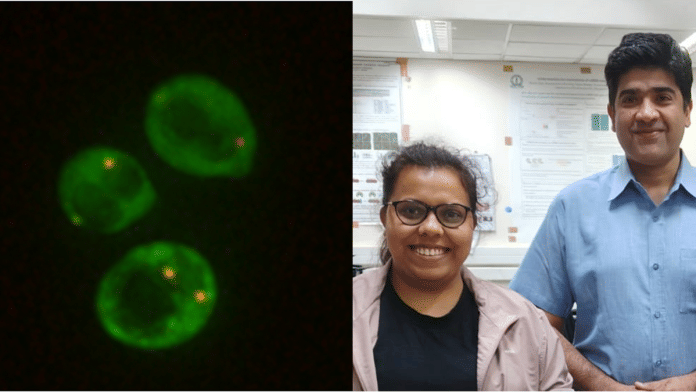Bengaluru: Planet Mars is often endorsed as an exit plan for earthly beings, but
odds of surviving in its extreme conditions are far from known.
Scientists at the Indian Institute of Science (IISc) and ISRO’s Physical Research Laboratory (PRL) took a step closer to understanding what may survive on the ‘red planet’.
And, the results were surprising.
Scientists found that baker’s yeast (Saccharomyces Cerevisiae), a fungus, could withstand meteor attacks and toxic chemicals, typical to the existing Mars environment.
For the experiment, they put yeast through a Martian obstacle course—high-intensity shock waves and perchlorate salts, which act as toxic chemicals.
The study, titled ‘Ribonucleoprotein (RNP) condensates modulate survival in response to Mars-like stress conditions’, was published in the journal PNAS Nexus on 14 October.
“We hope that this study will galvanise efforts to have yeast on board in future space explorations,” Purusharth Rajyaguru, an associate professor at IISc’s department of biochemistry, was quoted as saying in the institute’s press release.
According to the IISc statement, these results add weight to India’s efforts in astrobiology research and help determine the survival of lifeforms beyond Earth.
“We were surprised to observe yeast surviving Mars-like stress conditions that we used in our experiments,” Rajyaguru was quoted as saying.
How yeast survives on Mars
Researchers noted that the yeast cells survived the tough task, but their cell growth plunged.
Yeast’s resilience, though, was attributed to a defence mechanism that cells adopted, just to shield themselves.
When put through shock waves, yeast produced stress granules and tiny, structure-less membranes, called P-Bodies. Stress granules are known to inhibit protein production while P-Bodies are involved in longer term m-RNA storage, helping in the conservation of energy.
But exposure only to perchlorate led to the generation of P-Bodies, not the granules, the research found.
Yeast mutants that failed to form protective P-bodies (or granules) had a lower chance of survival on Mars.
Yeast and bacteria are typical candidates to understanding survival in harsh conditions, but researchers were able to take a “multidisciplinary approach”, comprising engineering, imaging, genetics and genomics, this time around, the paper says.
In addition, the study was able to highlight the importance of membrane-less structures in protecting cells, making this research a first of its kind.
Mimicking Mars-like stress conditions
The experiment to mimic Martian shockwaves involved herculean efforts.
“One of the biggest hurdles was setting up the HISTA tube to expose live yeast cells to shock waves and then recovering yeast with minimum contamination for downstream experiments,” Riya Dhage, the study’s lead author and project associate, department of biochemistry, IISc, said in the press release.
In simpler terms, scientists put the yeast cells through shock waves using a high-intensity shock tube for astrochemistry (HISTA) and monitored them at equal intervals till 40 hours. The cells were then given a hot bath, i.e., kept in a diluted solution following a temperature treatment.
To check for survival in toxic conditions, perchlorate treatment was given to the cells, and then the same hot bath drill was repeated and observed for 40 hours.
The obstacle course didn’t end there.
Another group of cells was first taken through shock waves, put through perchlorate, and then subjected to temperature treatment to observe the effect of combined stress. In this case, the stress damage was higher, but cells managed to recover, albeit over a longer duration than it took in the previous experiments.
The experiment was followed by extensive analysis through imaging and genomics at the laboratory. The study noted that data on stress response in yeast can be translated to “inform strategies for assessing human health before and after space explorations”.
The whole study was funded by IISc-ISRO Space Technology Cell, Department of Science and Technology, Fund for Improvement of S&T Infrastructure programme, and the Union Ministry of Education.
(Edited by Prerna Madan)
Also Read: Surf’s up on Mars. Red planet once had ‘vacation-style’ beaches, suggest new findings






